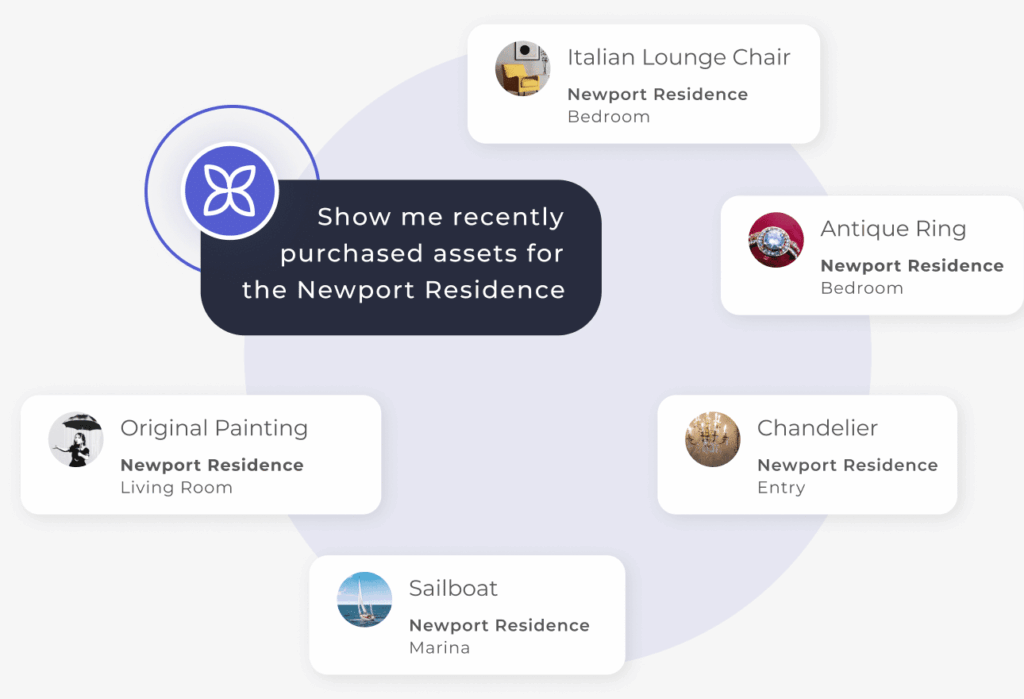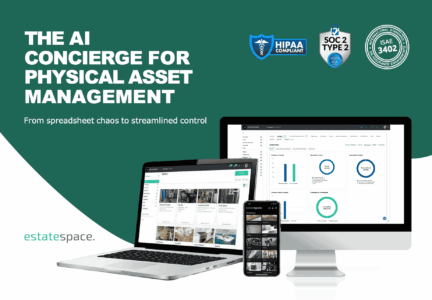Managing high-value estate portfolios requires precision, transparency, and real-time visibility across diverse asset classes. Modern estate asset tracking has become essential as today’s family offices and asset managers oversee complex portfolios spanning multiple properties, art collections, vehicles, jewelry, and specialty assets worth hundreds of millions. However, traditional tracking methods often fall short when managing such complexity.
Consider a prominent family office managing assets across five properties, three countries, and dozens of asset categories. Previously, they relied on spreadsheets, manual inventories, and fragmented systems. Consequently, this led to missing items, insurance gaps, and compliance issues that cost both time and money.
The solution lies in modern estate asset tracking platforms that bring together all assets under unified management. Therefore, smart families are embracing technology to gain complete visibility and control over their valuable holdings.
Understanding Estate Asset Tracking Challenges
The Complexity of Modern Portfolios
Estate asset tracking involves far more than simple inventory management. Modern estate professionals must track fine art, antiques, wine collections, vehicles, technology equipment, and personal items across multiple locations. Additionally, they need to manage insurance records, appraisals, maintenance schedules, and legal documentation for each asset.
Furthermore, regulatory requirements and tax implications add layers of complexity. Estate managers must ensure accurate valuations, proper documentation, and compliance with evolving regulations across different jurisdictions.
Traditional Tracking Limitations
Legacy systems create significant challenges for estate asset tracking. Spreadsheets become unwieldy with thousands of items, while paper records are easily lost or damaged. Moreover, multiple team members often maintain separate records, leading to inconsistencies and gaps in asset visibility.
As wealthy families navigate increasingly complex financial landscapes, traditional asset management approaches often fall short of meeting sophisticated portfolio requirements.
Common problems include:
- Missing insurance renewal dates and coverage gaps
- Lost appraisal schedules and outdated valuations
- Vendor contact information scattered across multiple systems
- Maintenance records stored in different locations
When assets move between properties or undergo maintenance, tracking becomes even more difficult. As a result, valuable items can be misplaced, insurance coverage may lapse, and portfolio valuations become inaccurate.
The Power of Digital Estate Asset Tracking
Centralized Asset Visibility
Modern estate asset tracking platforms provide complete portfolio oversight through centralized dashboards. Estate managers can view all assets across locations, categories, and ownership structures in real-time. Additionally, detailed asset profiles include photos, documentation, insurance records, and maintenance histories.
For example, a house manager can instantly locate a specific piece of artwork, verify its current insurance coverage, check when the last appraisal was completed, and schedule required conservation work. Meanwhile, asset managers gain portfolio-level insights for strategic planning and risk management.
Smart Automation Features
AI-powered estate asset tracking platforms automate routine tasks that previously consumed hours of manual work. Furthermore, the system can schedule maintenance reminders, track insurance renewal dates, and flag assets requiring attention or reappraisal.
Additionally, automated valuation alerts help maintain accurate portfolio assessments. The platform tracks appraisal schedules and suggests revaluations when market conditions change or time-based requirements approach. As properly maintained physical assets can actually grow in value and be an excellent way of preserving wealth, systematic tracking ensures optimal asset performance over time.
Enhanced Security and Compliance
Digital estate asset tracking provides robust security features essential for high-value portfolios. Role-based access controls ensure only authorized personnel can view sensitive information. Moreover, detailed audit trails track all system activities for compliance and security purposes.
Furthermore, automated reporting capabilities help estate professionals meet regulatory requirements and provide accurate documentation for tax and legal purposes. Insurance claims become streamlined with complete asset documentation readily available.

Overcoming Estate Asset Tracking Portfolio Visibility Challenges
Real-Time Asset Oversight Across Locations
Estate professionals managing multiple properties struggle with fragmented asset visibility. AI-powered estate asset tracking platforms eliminate this challenge by providing complete portfolio oversight through centralized dashboards. Instead of requesting updates from various locations, managers access real-time data on asset performance, locations, conditions, insurance status, and maintenance schedules across all properties.
Additionally, these platforms enable instant location queries and asset verification. When staff need to locate specific items or coordinate vendor services, they can quickly access detailed asset profiles with photos, documentation, care instructions, and approved vendor contact information.
Streamlined Location Management
Properties with extensive asset collections face constant coordination challenges. Modern estate asset tracking solutions provide location-specific views that show all items within individual facilities. Moreover, staff can update asset conditions, report maintenance needs, coordinate with approved vendors, and track insurance requirements directly through the platform.
Managing multiple properties requires specialized approaches to address unique environmental and logistical factors that affect asset preservation. As a result, property oversight becomes more efficient and accurate without endless phone calls or emails to insurance agents and service providers.
Enhanced Guest Services and Event Management
High-value estates frequently host events requiring quick access to specific items and collections. AI-powered platforms solve this challenge through mobile access that enables real-time updates during events or asset movements. Furthermore, staff can instantly verify item availability, access care and handling instructions, coordinate with approved vendors for setup services, and ensure proper insurance coverage during events.
Strategic Financial Planning and Risk Assessment
Portfolio managers need accurate asset valuations, insurance coverage analysis, and maintenance cost projections for informed decision-making. Estate asset tracking platforms address this need by providing detailed reporting tools with current valuations, insurance policy information, maintenance histories, and vendor performance metrics.
Understanding the true value of physical assets becomes critical for strategic portfolio management and wealth preservation decisions. Additionally, AI-driven analytics identify appraisal schedules, insurance gaps, and maintenance trends, enabling more informed financial planning and risk management discussions.
Implementation Best Practices
Getting Started with Estate Asset Tracking
Successful implementation begins with comprehensive asset discovery and categorization. The process typically follows these key steps:
- Complete Asset Inventory – Conduct thorough inventories across all properties and storage locations
- Digital Documentation – Photograph and document each asset with detailed descriptions
- System Setup – Establish consistent naming conventions and classification systems
- Staff Training – Ensure all team members understand new processes and platform features
- Integration Testing – Verify connections with existing insurance, appraisal, and vendor systems
Data Migration and Integration
Estate asset tracking platforms integrate with existing property management systems, insurance databases, and financial reporting tools. Moreover, professional migration services ensure accurate data transfer without disrupting daily operations.
Furthermore, ongoing synchronization keeps all systems updated as asset information changes.
The Future of Estate Asset Tracking
Estate asset tracking technology continues evolving with new capabilities. Advanced photography and documentation features provide enhanced visual records for high-value items. Additionally, blockchain integration offers improved authenticity verification and ownership documentation.
Moreover, artificial intelligence improves valuation accuracy and risk assessment capabilities. Machine learning analyzes market trends and asset performance to provide predictive insights for portfolio optimization.
EstateSpace provides the comprehensive estate asset tracking platform designed specifically for high-value portfolios. Our solution brings together all assets under unified management while delivering the security, compliance, and insights that family offices and estate professionals require.
Ready to transform your estate asset tracking with digital innovation? Discover how leading family offices are achieving complete portfolio visibility and control.
Schedule Your Private Consultation and join the professionals already modernizing their asset management with smart tracking solutions.



